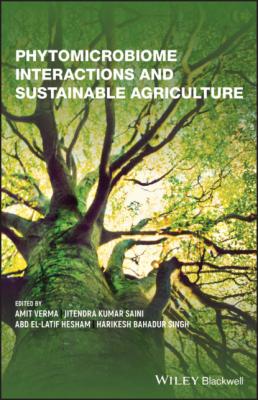Cyclic hydroxamates
Maize (Zea mays L.)
|
Mediate aluminum toxicity resistance in plant
|
Poschenrieder et al. (2005)
|
|
9
|
Benzoxazinoids, secondary metabolites in grasses
|
Maize (Zea mays L.)
|
Regulator of innate immunity against aphids and fungi
|
Ahmad et al. (2005)
|
|
10
|
Carotenoid‐derived strigolactones
|
Pea & Arabidopsis
|
Involved in inhibition of shoot branching in plants
|
Gomez‐Roldan et al. (2008)
|
|
11
|
Soyasaponins
|
Soybean (Glycine max)
|
Regulates communication with beneficial microorganisms in soil
|
Tsuno et al. (2018)
|
|
12
|
Phytoestrogens
|
Clover legume
|
Male‐biased sex ratios and accelerates male metamorphic timing in wood frogs
|
Lambert (2015)
|
|
13
|
Phenol glycoside: rutin
|
Eucalyptus globulus ssp. bicostata r
|
Regulate orientation of hyphal elongation toward the root tip, thereby favoring mycorrhizal infection
|
Lagrange et al. (2001)
|
|
14
|
Artificial root exudate having glucose, organic acids, and serine
|
—
|
These components of root exudate accelerate the degradation of pyrene in soil, especially glucose
|
Lu et al. (2017)
|
|
15
|
Organic acids
|
Legumes Lotus corniculatus L. and Trifoliumarvense L. and the grass Calamagrostis epigeios (L.)
|
Influence of these exudation components on plant nutrient acquisition
|
Boldt‐Burisch et al. (2019)
|
|
16
|
Root exudate components: proline and phytohormones
|
Citrus plants
|
Alleviation of abiotic stress conditions.
|
Vives‐Peris et al. (2017)
|
|
17
|
Root exudate components: proline and salicylates
|
Citrus plants
|
Recruitment of rhizobacteria and alleviation of abiotic stress conditions.
|
Vives‐Peris et al. (2018)
|
|
18
|
1‐alanine, 1‐proline and oxalic acid of root exudate
|
Sedum alfredii
|
Phytoremediation of lead contaminated soils
|
Luo et al. (2017)
|
|
19
|
Organic acids like malic, lactic, acetic, succinic, citric, and maleic acids in root exudates
|
Corn hybrids (Zea mays L.)
|
These exudate components might contribute to drought tolerance in corn hybrids
|
Song et al. (2012)
|
|
20
|
Organic acid exudates
|
White spruce (Picea glauca) and subalpine Fir (Abieslasiocarpa)
|
Significant role of exudate organic acids in the transformation of mica and chlorite into smectite in rhizospheric soils
|
Tuason and Arocena (2009)
|
|
21
|
Root exudate metabolome: primary and secondary metabolites
|
Quercus ilex (holm oak)
|
Exudate components were changed irreversibly by the lack of water under extreme drought conditions
|
Gargallo‐Garriga et al. (2018)
|
|
22
|
Seed exudate: carbon and nitrogen contents
|
Chia (Salvia hispanica)
|
Plant exudates greatly affect the physical behavior of soil
|
Oleghe et al. (2017)
|
|
23
|
Exudate components like total free amino acids, proline, potassium, and some phytohormones
|
Barley (Hordeum vulgare L.)
|
Root exudate is an important factor in the context of crop performance and carbon balance under conditions of climate change
|
Olga et al. (2017)
|
|
24
|
Sakuranetin and sorgoleone of root exudate
|
Sorghum (Sorghum bicolor L.)
|
Biological nitrification inhibition activity
|
Subbarao et al. (2013)
|
|
25
|
1,9‐decanediol
|
Rice (Oryza sativa)
|
Blocks the ammonia monooxygenase pathway of ammonia oxidation and effects nitrogen use efficiency
|
Sun et al. (2016)
|
References
1 Abdel Lateif, K., Bogus, D., and Hocher, V. (2012). The role of flavonoids in the establishment of plant roots endosymbioses with arbuscular mycorrhiza fungi, rhizobia and Frankia bacteria. Plant Signal. Behav. 7 (6): 636–641.
2 Ahmad, S., Veyrat, N., Gordon Weeks, R. et al. (2005). Benzoxazinoid metabolites regulate innate immunity against aphids and fungi in maize. Plant Physiol. 157 (1): 317–327. https://doi.org/10.1104/pp.111.180224.
3 Asao, T., Hasegawa, K., Sueda, Y. et al. (2003). Autotoxicity of root exudates from taro. Sci. Hortic. 97: 389–396. https://doi.org/10.1016/S0304‐4238(02)00197‐8.
4 Badri, D.V. and Vivanco, J.M. (2009). Regulation and function of root excudates. Plant Cell Environ. 32: 666–681.
5 Badri, D.V., Loyola‐Vargas, V.M., Broeckling, C.D. et al. (2008). Altered profile of secondary metabolites in the root exudates of Arabidopsis. Plant Physiol. 146 (2): 762–771.
6 Bais, H.P., Walker, T.S., Schweizer, H.P., and Vivanco, J.M. (2002). Root specific elicitation and antimicrobial activity of rosmarinic acid in hairy root cultures of sweet basil (Ocimumbasilicum L.). Plant Physiol. Biochem. 40: 983–995.
7 Bais, H.P., Prithiviraj, B., Jha, A.K. et al. (2005). Mediation of pathogen resistance by exudation of antimicrobials from roots. Nature 434: 217–221.
8 Bais, H.P., Weir, T.L., Perry, L.G. et al. (2006). The role of root exudates in rhizosphere interactions with plants and other organisms. Annu. Rev. Plant Biol. 57: 233–266.
9 Boldt‐Burisch, K., Bernd, U., Annenaeth, M., and Fhüttl, R. (2019). Root exudation of organic acids of herbaceous pioneer plants and their growth in sterile and non‐sterile nutrient‐poor, sandy soils from post‐mining sites. Pedosphere
